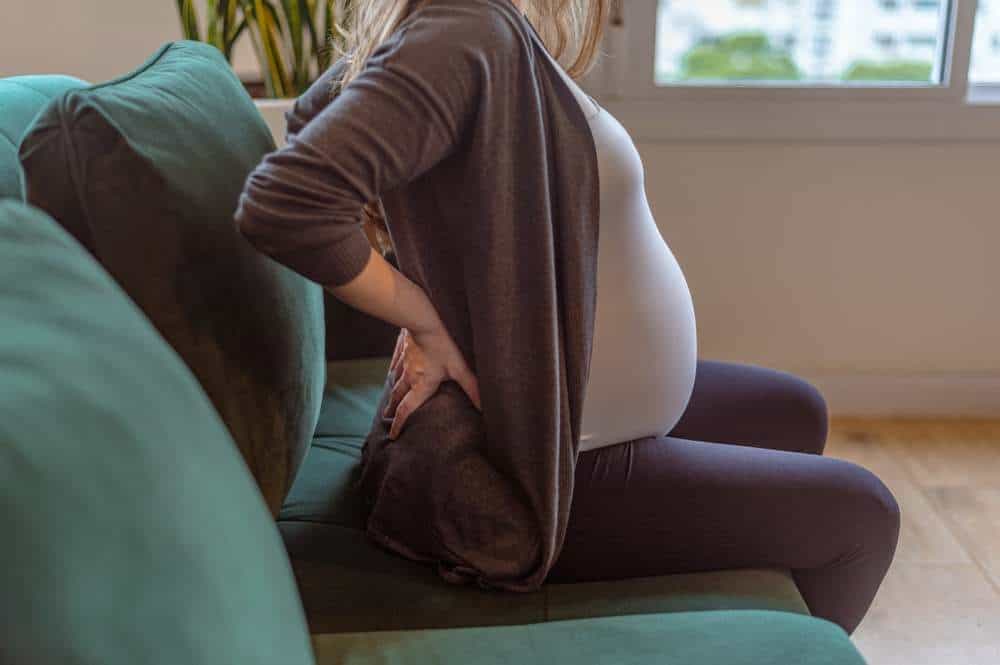One of the most common reasons people visit the doctor yearly is back pain. From car accident injuries to chronic pain, back pain can happen at any age for various reasons. But what do you do when you start noticing other symptoms occurring simultaneously as back pain? If you notice abdominal pain and back pain that happen at the same time, you could be dealing with any number of health conditions. These are some of the most common explanations for why you might be experiencing back pain and nausea at the same time and what you can do about it.
How Are Back Pain and Nausea Related?
Back pain and nausea may be related if the cause of the back pain is related to a condition that also causes nausea. Your brain sends and receives signals through the nervous system that connects with various nerves throughout the body. Specialized nerve cells known as nociceptors found in the skin, muscles, and other body tissues send information about pain to the brain. Injury, inflammation, and other harmful stimuli can stimulate nociceptors that then send messages to the brain. Once your brain receives these messages, it creates a conscious perception of pain. This also allows your body to jumpstart various healing responses, like releasing certain chemicals that can act as painkillers and reduce pain perception. Abdominal pain, back pain, and other symptoms are all communicated through a complex series of nerves and your brain.
Conditions That May Cause Back Pain and Nausea

Several potential things may cause back pain and nausea to occur at the same time.
Digestive Tract-Related Back Pain and Nausea
Digestive tract-related back pain and nausea can occur with gastrointestinal issues, including irritable bowel syndrome, inflammatory bowel disease, or ulcerative colitis. Inflammation, indigestion, and other issues within the digestive system can cause abdominal pain that may radiate into the back, as well as nausea and vomiting.
Cervicogenic Headaches
A cervicogenic headache is a specific type of headache that commonly starts in the neck. Cervicogenic headaches can result in a reduced range of motion in the neck because movement can increase symptoms and discomfort. These types of headaches can cause pain in the neck that radiates into the upper back, along with other symptoms like nausea and vomiting.
Pregnancy-Related Back Pain and Nausea
Women go through a lot of obvious physical changes to their bodies when pregnant, and there are a lot of internal changes going on as well. Changes to hormone levels can trigger nausea and vomiting, while back pain can also occur at the same time. Abdominal pains or cramps can be common in pregnancy and may go away when you change position or rest. However, it is always best to let your doctor know when you experience abdominal pain, nausea, and other symptoms.
Liver Disease
There are many different types of health conditions that can damage the liver and prevent it from functioning well. The most common types of liver disease include alcoholic hepatitis, cirrhosis of the liver, and hepatitis. Along with nausea and vomiting as common symptoms, many people with liver disease report general pain in the abdomen as well as the back.
Pancreatitis
Pancreatitis is an inflammation of the pancreas, an organ located in the lower part of the abdomen. This condition can start suddenly and last for a short period of time or can develop gradually over many years. Common symptoms of pancreatitis include abdominal pain, nausea, and vomiting.
Kidney Stones
Kidney stones are hard deposits of minerals and acid salts that develop in the kidneys and can cause significant pain when passed. While kidney stones usually don’t cause permanent damage, they can cause severe pain and discomfort while passing through the urinary tract. Kidney stones typically cause pain in the side of the abdomen, and nausea is also common.
Ulcers
A stomach ulcer, also known as a peptic ulcer, is a type of sore that develops on the lining of the stomach. An ulcer can develop if stomach acid damages the lining of the digestive tract. This can cause upper abdominal pain, along with symptoms like radiating pain in the back, nausea, and vomiting.
Endometriosis
Endometriosis is a health condition where the tissue that normally lines the uterus grows outside of the uterus. This tissue can be found on the ovaries, fallopian tubes, intestines, and other abdominal areas. The most common symptoms of endometriosis are pain and irregularities with menstruation.
Appendicitis
Appendicitis is a condition where the appendix becomes inflamed and filled with pus, which can cause severe pain. The appendix typically causes pain along the right side of the body and can also be accompanied by nausea, vomiting, fever, and chills. Appendicitis is usually treated with surgery and antibiotics.
When Should You Go to the Doctor for Back Pain and Nausea?
If you have one of the health conditions mentioned above, see a back pain doctor if you notice any changes in your symptoms. For example, an increase in back pain or the addition of other symptoms may signal that further treatment is necessary. In some cases, the relationship between your back pain and nausea symptoms may not be clear, and further evaluation may be necessary. Your doctor may want to run tests like bloodwork or diagnostic imaging to get a better understanding of what is causing your symptoms and help you experience lasting relief.
Get Expert Care from Back Pain Specialists
Don’t let back pain and nausea keep you from living your best life. Visit a Pro-Care Medical Center near you to get started with our back pain specialists, who will provide you with quality, comprehensive care.



